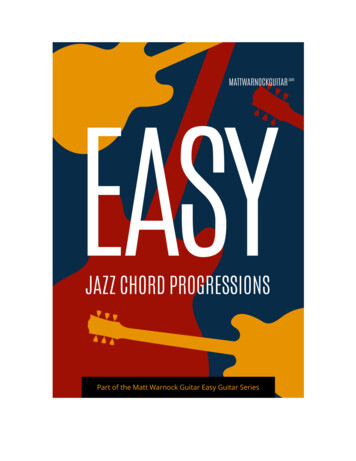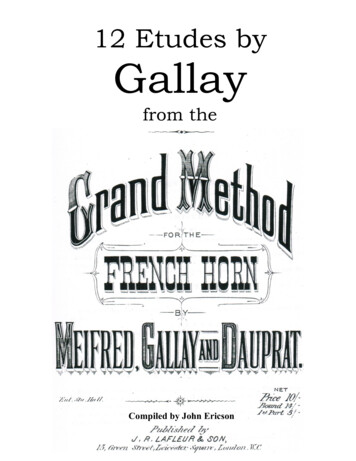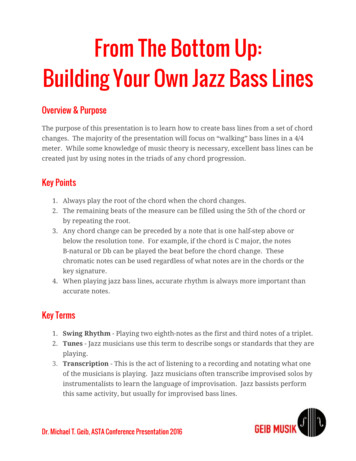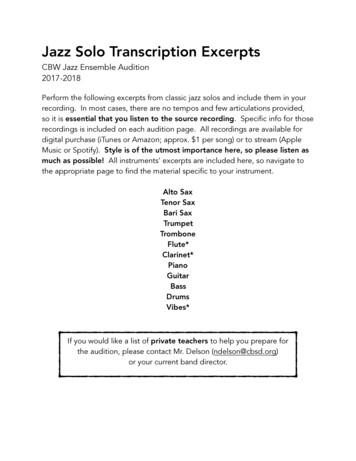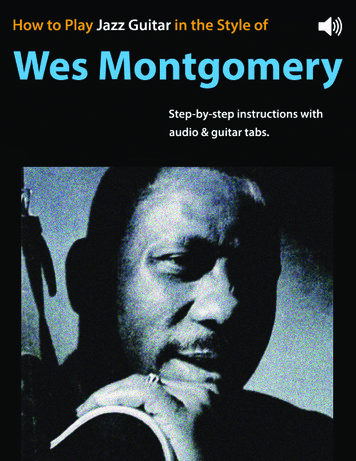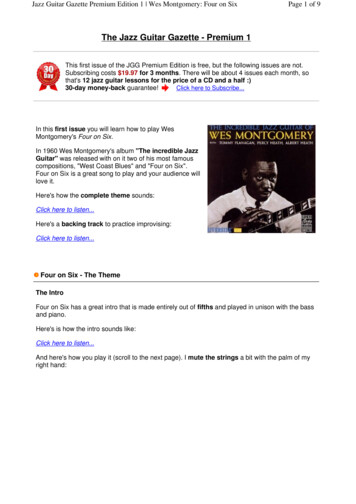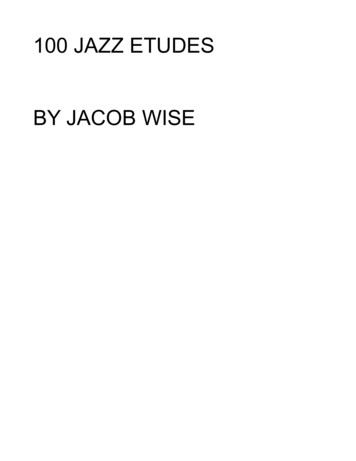
Transcription
100 JAZZ ETUDESBY JACOB WISE
TABLE OF CONTENTS1) All Of Me26) Impressions2) All The Things You Are27) Invitation3) Alone Together28) It Could Happen To You4) Autumn Leaves – E minor29) Joy Spring5) Autumn Leaves – G minor30) Just Friends6) Beautiful Love31) Lady Bird7) Blue Bossa32) Lazy Bird8) Blues – Bb33) Moment's Notice9) Blues – F34) My Romance10) Body and Soul35) Night And Day11) C minor blues36) On Green Dolphin Street12) Cherokee37) Out Of Nowhere13) Confirmation38) Rhythm Changes – Bb14) Days Of Wine And Roses39) Rhythm Changes – F15) Donna Lee40) Solar16) Four41) Stablemates17) Giant Steps42) Stella By Starlight18) Girl From Ipanema43) Take The “A” Train19) Have You Met Miss Jones44) There Is No Greater Love20) How Deep Is The Ocean45) There Will Never Be Another You21) How High The Moon46) Time Remembered22) How Insensitive47) Triste23) I Fall In Love Too Easily48) What Is This Thing Called Love24) I Thought About You49) Yesterdays25) I'm Getting Sentimental Over You50) You Stepped Out Of A Dream
This collection of jazz etudes is intended to aid with the development of basic jazzvocabulary and “inside” playing. Each of these etudes is designed to clearly outline the chordprogression so that the solo line reflects all the harmonies of the tune. As an improviser, youshould be able to create a solo line that stands on its own harmonically and does not dependon a chordal accompaniment to define it. Of course, many other harmonic approaches arepossible, but the ability of outlining chords is a basic skill that all players should master.Since these etudes were designed to focus on outlining chords, they do not contain agreat deal of of rhythmic interest or melodic/motivic development. Although rhythmic varietyand forward motion, along with a wide variety of accents and articulations, are fundamental togood jazz improvisation, this book focuses on a basic harmonic and melodic vocabulary.Once a player can navigate a tune's harmony confidently, then rhythm can more easily cometo the foreground.You may notice that certain phrases appear in many solos. This book is not intendedas a compendium of every possible pattern or harmonic approach. You will need to transcribea wide variety of players to broaden your jazz vocabulary. To provide more variety, manyetudes have been written with a certain concept in mind – focusing on a certain interval orposition on the guitar. Chord symbols have been simplified, especially on dominant chords. Asyou play through the etudes, try to keep track of which chord tones are played over eachchord type.These solos should be played at a relatively slow tempo - quarter note 80 to 140.Most solos contain too many notes to be played comfortably at a fast tempo, although you arewelcome to attempt this if you desire.Here are some practice suggestions for getting the most out of the book:1) Use this book to practice sight reading – set the metronome on a reasonable tempoand read an etude from beginning to end without stopping. You may also want to tryreading the etudes in different positions. Some etudes were written for a certainposition or set of strings, but you are welcome to play them in any position you desire.
2) Learn and memorize short sections of the solo – 4 and 8 bar phrases. Analyze how thelines resolve, then try transposing these phrases to other keys.3) Use the solos as a library of patterns or licks. Take a one or two bar phrase andtranspose it to all 12 keys. Try to play the phrase on as many sets of strings aspossible. For example, a short pattern that is played on two strings could be played onstrings 12, 23, 34, 45, and 56.4) Compose your own solos on these progressions- writing out your own solo lines is agreat way to make your melodic and harmonic ideas more solid, and to gain facilitywith spelling chords.
b
2) Learn and memorize short sections of the solo – 4 and 8 bar phrases. Analyze how the lines resolve, then try transposing these phrases to other keys. 3) Use the solos as a library of patterns or licks. Take a one or two bar phrase and transpose it to all 12 keys.File Size: 2MBPage Count: 112

